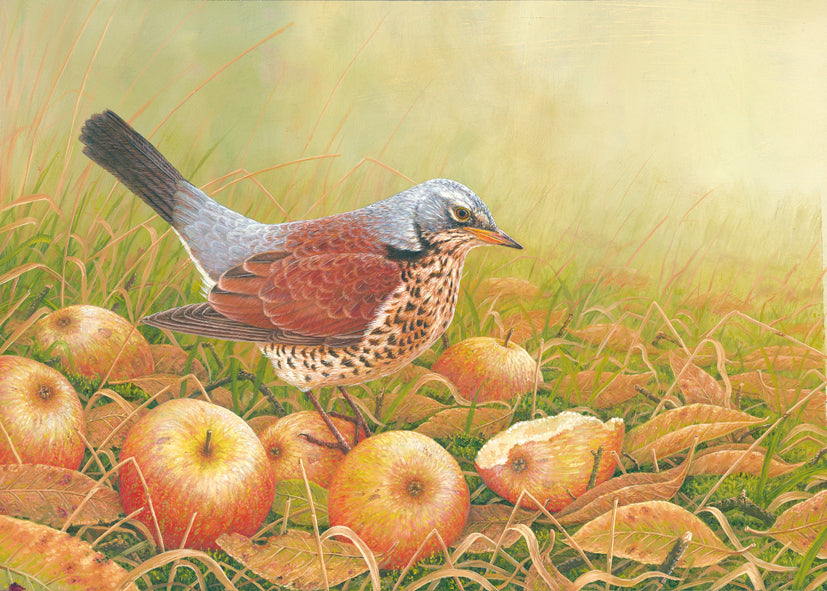I am constantly on the look out for new subjects to paint and I have designed my garden to ensure I attract as many birds and mammals here in order to inspire new compositions all year round. In 2006, I planted 1,200 trees to create a woodland on what at the time was a bare hillside behind my gallery. Read more on how I set about planting my garden deliberately to attract wildlife to it by clicking here. This wooded spinney has turned out to be a real wildlife haven and in the years since I planted it it has really come into its own. It attracts a huge variety of bird species which feed from the berries and insects there and nest in the branches all year round.
Among the trees I planted were some apple trees. At this time of year I tend to leave the windfall apples on the ground for the birds, especially the fieldfares. These colourful members of the thrush family are mainly seasonal visitors and their arrival from Scandinavia is an indicator of the onset of winter. They eat worms and berries, such as hawthorn berries, but during very cold frosts they will venture into gardens where they are partial to fruit. After watching a flock one winter, I decided to carry a few windfall apples to my front garden, where I could see them from my living room window. Sure enough the fieldfares, obligingly, followed and I was able to take the photographic study for my painting, below.
 Fieldfare on Apples, painted by Robert E Fuller
Fieldfare on Apples, painted by Robert E FullerThe woodland is also planted with cotoneaster bushes which tend to berry later in the season, providing a later supply of food for the fieldfares. I like the idea that I'm able to lay out a season-long menu for these birds.They are really quite engaging birds to watch. I like the touch of colour and cheerful chattering noise they bring to the garden at this time of year.

Scroll down to see more of my photographs of fieldfares, taken on a cold winter's day here at Fotherdale.
My next exhibition will be a focus on British wildlife in winter. Opening on November 4th -26th, I'll be exhibiting all my latest paintings and opening the doors to my studio so that visitors can see my photographic and video study of wildlife in winter. Click the link below to read all about it.
https://www.robertefuller.com/my-christmas-exhibition-will-focus-on-wildlife-in-winter/














